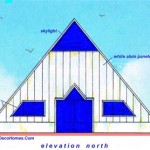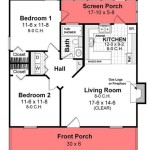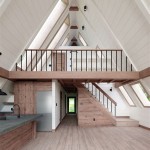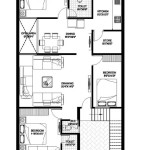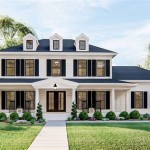A Container House Floor Plan is a design that outlines the layout and arrangement of rooms, spaces, and other features within a container house. These floor plans typically consider the placement of walls, windows, doors, stairs, and built-in fixtures, offering a blueprint for constructing a functional and livable space from the confines of shipping containers.
Container houses, built from repurposed shipping containers, are gaining popularity due to their versatility, affordability, and environmental sustainability. By stacking and modifying these containers, architects and homeowners can create unique and modern living spaces. However, to create a comfortable and practical living environment within these often long and narrow structures, careful planning and meticulous design are crucial. This is where Container House Floor Plans come into play.
In the following sections, we will delve deeper into the essential elements of Container House Floor Plans, explore different design considerations, and provide practical tips for maximizing space and creating a comfortable and functional home within these unconventional structures.
To create a functional and comfortable container house, careful planning and meticulous design are crucial. Here are 8 important points to consider when designing a Container House Floor Plan:
- Maximize space utilization
- Ensure natural light and ventilation
- Consider multiple container configurations
- Plan for efficient circulation
- Incorporate storage solutions
- Design for flexibility and adaptability
- Prioritize sustainability and energy efficiency
- Comply with building codes and regulations
By considering these factors, architects and homeowners can create unique, livable, and sustainable homes within the confines of shipping containers.
Maximize space utilization
Making the most of the limited space within a container house is essential for creating a comfortable and functional living environment. By implementing clever design strategies, homeowners can optimize space utilization and create the illusion of a more spacious interior.
- Vertical space utilization:
Take advantage of the height of the container by incorporating mezzanines, lofts, and built-in storage that extends vertically. This allows for the creation of additional sleeping areas, storage spaces, or even home offices without sacrificing floor space.
- Multi-functional spaces:
Design spaces that serve multiple functions. For example, a living room can double as a dining area, or a bedroom can incorporate a dedicated workspace. This eliminates the need for separate rooms, maximizing space efficiency.
- Built-in furniture and storage:
Incorporate built-in furniture and storage solutions, such as benches with hidden compartments, floating shelves, and Murphy beds. These space-saving designs keep clutter off the floor and create a more organized and spacious feel.
- Smart storage solutions:
Utilize smart storage solutions, such as under-bed storage, vertical organizers, and stackable containers. These help keep belongings organized and easily accessible, maximizing the available space.
By implementing these space-saving strategies, architects and homeowners can create container houses that feel both comfortable and spacious, without compromising on functionality or style.
Ensure natural light and ventilation
Creating a healthy and comfortable living environment within a container house requires careful consideration of natural light and ventilation. By incorporating strategic design elements, architects and homeowners can ensure that these structures are bright, airy, and conducive to well-being.
- Windows and skylights:
Installing ample windows and skylights allows natural light to penetrate deep into the container, reducing the need for artificial lighting and creating a more inviting and cheerful atmosphere. Skylights, in particular, can bring in overhead light, brightening up even the darkest corners.
- Cross-ventilation:
To ensure proper ventilation and air circulation, incorporate windows and vents on opposite sides of the container. This allows fresh air to flow through the space, carrying away stale air and moisture, and preventing the buildup of harmful pollutants.
- Ventilation systems:
In addition to natural ventilation, consider installing mechanical ventilation systems, such as exhaust fans and air conditioners. These systems help regulate indoor air quality, remove excess moisture, and maintain a comfortable temperature, especially during extreme weather conditions.
- Courtyards and outdoor spaces:
If possible, incorporate courtyards or outdoor spaces into the container house design. These areas provide additional natural light, ventilation, and a connection to the outdoors, creating a more spacious and inviting living environment.
By implementing these natural light and ventilation strategies, architects and homeowners can design container houses that are not only aesthetically pleasing but also healthy and comfortable to live in.
Consider multiple container configurations
When designing a Container House Floor Plan, it is essential to consider multiple container configurations to create a structure that meets the specific needs and preferences of the occupants. By combining containers in various ways, architects and homeowners can create unique and functional living spaces that maximize space and optimize functionality.
One common configuration is to stack containers vertically, creating a multi-story structure. This approach is ideal for maximizing space on smaller lots or creating additional living areas without expanding the footprint of the house. Vertical configurations also allow for the incorporation of balconies or rooftop terraces, providing additional outdoor space and enhancing the overall aesthetic.
Another configuration is to connect containers horizontally, creating a more expansive single-story layout. This approach is well-suited for larger lots and provides greater flexibility in terms of room arrangement. Horizontal configurations also allow for the creation of open floor plans, which promote a sense of spaciousness and facilitate natural light penetration.
Hybrid configurations, which combine vertical and horizontal elements, offer even greater design possibilities. These configurations can create interesting and dynamic structures that maximize space and cater to specific functional requirements. For example, a hybrid configuration could involve stacking containers vertically to create a two-story living area, while connecting additional containers horizontally to create a ground-floor workspace or garage.
By carefully considering multiple container configurations and exploring different layout options, architects and homeowners can design Container House Floor Plans that are both functional and visually appealing. These structures can be tailored to suit various lifestyles and preferences, creating unique and comfortable living spaces within the confines of shipping containers.
Plan for efficient circulation
When designing a Container House Floor Plan, careful consideration should be given to efficient circulation, ensuring that occupants can move comfortably and safely throughout the space. By implementing strategic design elements, architects and homeowners can create a functional and user-friendly layout that maximizes space utilization and minimizes wasted areas.
One important aspect of efficient circulation is to minimize unnecessary hallways and corridors. Open floor plans, which combine multiple functions within a single open space, can help reduce the need for separate passageways and create a more spacious feel. When hallways are necessary, they should be kept as narrow as possible while still allowing for comfortable movement.
Another key element is to position rooms and spaces in a logical flow. For example, the kitchen should be easily accessible from the dining area, and the bedrooms should be located near the bathrooms. This reduces the need for excessive backtracking and creates a more convenient and efficient living environment.
Circulation should also consider the placement of furniture and other objects within the space. Overcrowding or poorly placed furniture can obstruct movement and create a cluttered feel. By carefully planning the layout and choosing furniture that is appropriately sized and positioned, architects and homeowners can ensure that the container house feels spacious and inviting.
Finally, it is important to consider the flow of natural light and ventilation when planning for efficient circulation. Windows and skylights should be strategically placed to provide ample natural light throughout the space, reducing the need for artificial lighting and creating a more pleasant and healthy living environment. Cross-ventilation should also be considered to ensure proper air circulation and prevent the buildup of stale air and moisture.
By implementing these principles of efficient circulation, architects and homeowners can design Container House Floor Plans that are not only functional and practical but also promote a sense of spaciousness and well-being.
Incorporate storage solutions
Maximize vertical space
Take advantage of the height of the container by incorporating vertical storage solutions, such as floor-to-ceiling shelves, hanging organizers, and loft storage. These vertical storage options allow for efficient use of space, keeping belongings off the floor and creating a more spacious feel.
Utilize built-in storage
Incorporate built-in storage solutions into the design, such as drawers under beds, benches with hidden compartments, and cabinetry integrated into walls. Built-in storage not only provides additional storage space but also creates a more streamlined and organized appearance.
Choose multi-functional furniture
Opt for furniture pieces that serve multiple functions and incorporate storage, such as ottomans with built-in storage compartments, coffee tables with drawers, and beds with built-in headboards that double as shelves. This helps maximize space utilization and reduce the need for separate storage units.
Implement smart storage techniques
Utilize smart storage techniques, such as vacuum storage bags, stackable containers, and wall-mounted organizers. These techniques help keep belongings organized, maximize space utilization, and create a more clutter-free environment.
Paragraph after details
By incorporating effective storage solutions into the Container House Floor Plan, architects and homeowners can create functional and organized living spaces that maximize space utilization and promote a sense of order and comfort.
Design for flexibility and adaptability
Creating a Container House Floor Plan that is flexible and adaptable allows homeowners to adjust the space to their changing needs and preferences over time. By incorporating design elements that promote flexibility, architects and homeowners can create living spaces that can easily be modified to accommodate different functions, lifestyles, and family compositions.
- Modular design:
Using modular components in the design allows for easy reconfiguration of the space. Walls, partitions, and even entire rooms can be moved or removed to create new layouts and adapt the house to changing needs.
- Multi-purpose spaces:
Designing spaces that can serve multiple functions provides flexibility and adaptability. For example, a living room can be easily converted into a guest room or a home office, depending on the need.
- Adaptable storage solutions:
Incorporating adaptable storage solutions, such as adjustable shelves, drawers, and movable cabinets, allows homeowners to customize the storage space to their specific needs and preferences.
- Future-proofing:
Considering future needs and potential changes in lifestyle is essential. Incorporating design elements that can accommodate future additions or modifications, such as extra electrical outlets or plumbing connections, ensures the house can be easily adapted as needs evolve.
By designing for flexibility and adaptability, Container House Floor Plans can create living spaces that are not only functional and comfortable but also capable of evolving and adapting to the changing needs of its occupants.
Prioritize sustainability and energy efficiency
Sustainability and energy efficiency are crucial considerations when designing Container House Floor Plans. By incorporating sustainable and energy-efficient features, architects and homeowners can create eco-friendly living spaces that minimize environmental impact and reduce energy consumption.
- Energy-efficient appliances and systems:
Choosing energy-efficient appliances, lighting systems, and heating and cooling systems can significantly reduce energy consumption. Look for appliances with Energy Star ratings, use LED lighting, and consider installing solar panels for renewable energy.
- Proper insulation and air sealing:
Adequate insulation and air sealing prevent heat loss and minimize energy waste. Ensure that walls, roofs, and floors are properly insulated, and seal any gaps or cracks to prevent air leakage.
- Natural light and ventilation:
Maximizing natural light through windows and skylights reduces the need for artificial lighting. Additionally, incorporating cross-ventilation promotes natural air circulation, reducing the reliance on air conditioning.
- Recycled and sustainable materials:
Using recycled and sustainable materials in construction not only reduces environmental impact but also contributes to the overall sustainability of the house. Consider using reclaimed wood, recycled steel, or bamboo for flooring, cabinetry, and other elements.
By prioritizing sustainability and energy efficiency in Container House Floor Plans, architects and homeowners can create eco-conscious living spaces that promote environmental responsibility and reduce the carbon footprint.
Comply with building codes and regulations
Importance of compliance
Building codes and regulations are established to ensure the safety, structural integrity, and habitability of buildings. Complying with these codes and regulations is essential for obtaining building permits and ensuring the safety and well-being of occupants. Failure to comply can result in fines, construction delays, or even the inability to occupy the container house.
Specific requirements for container houses
Building codes and regulations may have specific requirements for container houses, as they are not traditional stick-built structures. These requirements may include additional structural reinforcement, fire safety measures, and accessibility features. It is crucial to consult with local building officials and review the applicable codes to ensure that the Container House Floor Plan meets all necessary requirements.
Structural considerations
Building codes typically specify minimum structural requirements for buildings, including load-bearing capacity, wind resistance, and seismic resistance. Container houses must be designed to meet these requirements, considering the unique structural characteristics of shipping containers. Engineers may need to reinforce the containers by adding additional framing, supports, or bracing to ensure the structural integrity of the building.
Fire safety measures
Fire safety is a critical aspect of building codes. Container houses may require specific fire-resistant materials, fire-rated doors and windows, and smoke and carbon monoxide detectors to comply with fire safety regulations. It is essential to incorporate these measures into the Container House Floor Plan to ensure the safety of occupants in the event of a fire.
By adhering to building codes and regulations, architects and homeowners can create safe and habitable Container House Floor Plans that meet the necessary standards and ensure the well-being of occupants.










Related Posts


